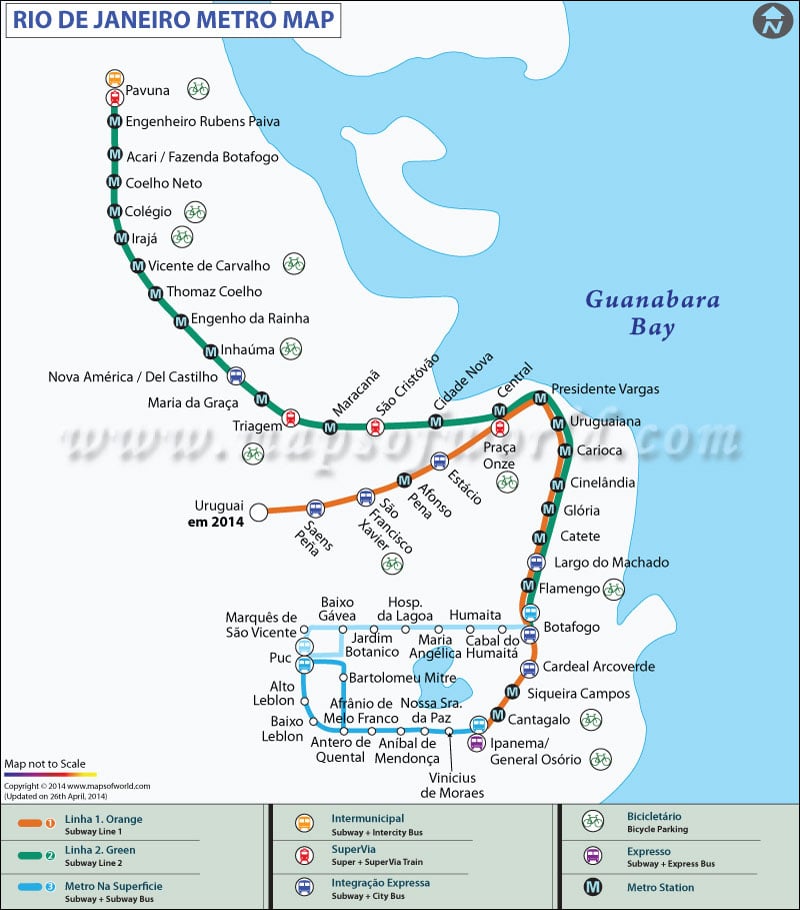The Rio de Janeiro Metro has been serving the city since 1979. This mass-transit underground railway network covers 25 miles (40 km) and serves 35 stations divided into two lines. It is one of the most efficient ways of getting around Rio.
Rio Metro Lines
Line 1: Known as the Orange Line, the 9.9-mile-stretch from Uruguai to General Osório connects some of the important destinations in Rio de Janeiro. Central, the busiest station on the network, is a major interchange point between the Metro, bus lines, and the SuperVia train network. Cardeal Arcoverde is the most beautiful station that retains a cave-like structure.
Line 2: Known as the Green Line, the 18.8-mile-stretch from Cidade Nova in South to Pavuna in North covers 10 stations in between.
Rio Metro Stations
Triagem and São Cristóvão are the nearest metro stations to the popular Maracana Stadium, which will host the Opening Ceremony of 2016 Rio Olympics. Recent extensions of metro network have ended the need for a transfer at Estácio Station and ensured direct connection from Pavuna Station to Botafogo. The extension of tracks has helped 0.25 million passengers on Line 2 to directly get to the South Zone.
Rio Metro Tickets
- For a single journey, you have to buy a ticket from the counter and travel to any station on any line. There is a flat single fare regardless of the distance you are traveling.
- If you also want to enjoy the bus services from some of the metro stations, then you have to get Metrô na Superfície card (single Journey with bus extension). These cards are also available on Metro buses.
- For those who want to travel on the subway and on express buses such as Cosme Velho and Urca, separate tickets need to be purchased on the subway or while boarding a bus.
- Prepaid cards, which are valid on metro and buses run by the metro company, can also be bought at any metro station.

